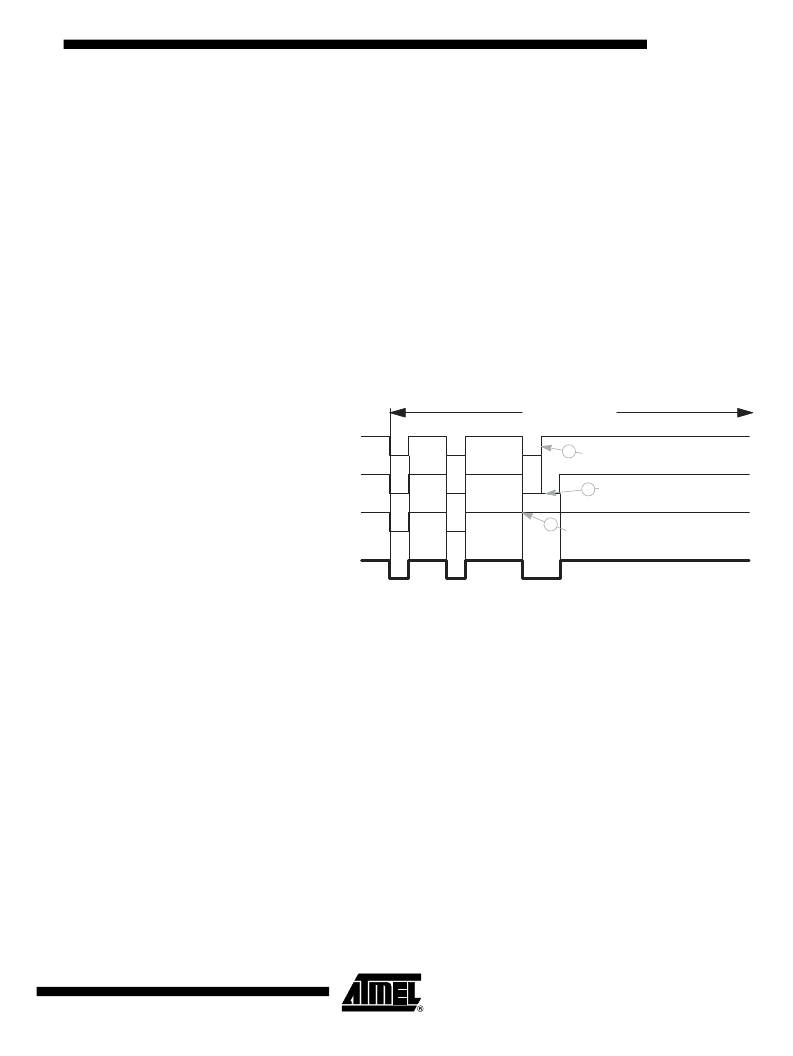- 您現(xiàn)在的位置:買賣IC網(wǎng) > PDF目錄373745 > TSS461E (Atmel Corp.) VAN Data Link Controller PDF資料下載
參數(shù)資料
| 型號(hào): | TSS461E |
| 廠商: | Atmel Corp. |
| 英文描述: | VAN Data Link Controller |
| 中文描述: | 凡數(shù)據(jù)鏈路控制器 |
| 文件頁數(shù): | 11/57頁 |
| 文件大小: | 817K |
| 代理商: | TSS461E |
第1頁第2頁第3頁第4頁第5頁第6頁第7頁第8頁第9頁第10頁當(dāng)前第11頁第12頁第13頁第14頁第15頁第16頁第17頁第18頁第19頁第20頁第21頁第22頁第23頁第24頁第25頁第26頁第27頁第28頁第29頁第30頁第31頁第32頁第33頁第34頁第35頁第36頁第37頁第38頁第39頁第40頁第41頁第42頁第43頁第44頁第45頁第46頁第47頁第48頁第49頁第50頁第51頁第52頁第53頁第54頁第55頁第56頁第57頁

11
TSS461E
4194B–AUTO–12/04
VAN Protocol
Line Interface
There are three line inputs and one line output available on the TSS461E. Each of the
three inputs to use is either programmed by software or automatically selected by a
diagnosis system.
The diagnosis system continuously monitors the data received through the three inputs,
and compares them and the selected bitrate. It then chooses the most reliable input
according to the results.
The data on the line is encoded according to the VAN standard ISO/11519-3. This
means that the TSS461E is using a two-level signal having a recessive (1) and a domi-
nant (0) state. Furthermore, due to the simple medium used, all data transmitted on the
bus is also received simultaneously.
Consequently, the VAN protocol is a CSMA/CD (Carrier Sense Multiple Access/Colli-
sion Detection) protocol, allowing for continuous bitwise arbitration of the bus, and non-
destructive (for the higher priority message) collision detection.
Figure 5.
CSMA/CD Arbitration
In addition to the VAN specification there is also a pulsed coding of the dominant and
recessive states. This mode is intended to be used with an optical or radio link. In this
mode, the dominant state for the transmitter is a low pulse, (2x prescaled clocks at the
beginning of the bit) and the recessive state is just a high level.
When receiving in this mode, it is not the state of the signal which is decoded, but the
edges. Also, reception is imposed on the RxD0 input, and the diagnosis system does
not operate correctly.
In addition, in this mode there is an internal loopback in the circuit since optical trans-
ceivers are not able to receive the signal that they transmit.
Node a: TxD
Node a loses the arbitration
Node a releases the bus
Node b wins the arbitration
Node c loses the arbitration
Node c releases the bus
R
D
Node b: TxD
R
D
Node c: TxD
R
D
On Bus: DATA
R
D
Arbitration field
R: Recessive level
D: Dominant level
1
2
3
相關(guān)PDF資料 |
PDF描述 |
|---|---|
| TSS461E-TDRA-9 | VAN Data Link Controller |
| TSS461E-TERA-9 | VAN Data Link Controller |
| TSS461E-TRDZ-9 | VAN Data Link Controller |
| TSS461F | VAN Data Link Controller |
| TSS463-AAR | VAN Data Link Controller with Serial Interface |
相關(guān)代理商/技術(shù)參數(shù) |
參數(shù)描述 |
|---|---|
| TSS461E_06 | 制造商:ATMEL 制造商全稱:ATMEL Corporation 功能描述:VAN Data Link Controller |
| TSS461E-TDRA-9 | 制造商:ATMEL 制造商全稱:ATMEL Corporation 功能描述:VAN Data Link Controller |
| TSS461E-TDRZ-9 | 制造商:ATMEL 制造商全稱:ATMEL Corporation 功能描述:VAN Data Link Controller |
| TSS461E-TDSA-9 | 制造商:ATMEL 制造商全稱:ATMEL Corporation 功能描述:VAN Data Link Controller |
| TSS461E-TERA-9 | 制造商:ATMEL 制造商全稱:ATMEL Corporation 功能描述:VAN Data Link Controller |
發(fā)布緊急采購,3分鐘左右您將得到回復(fù)。